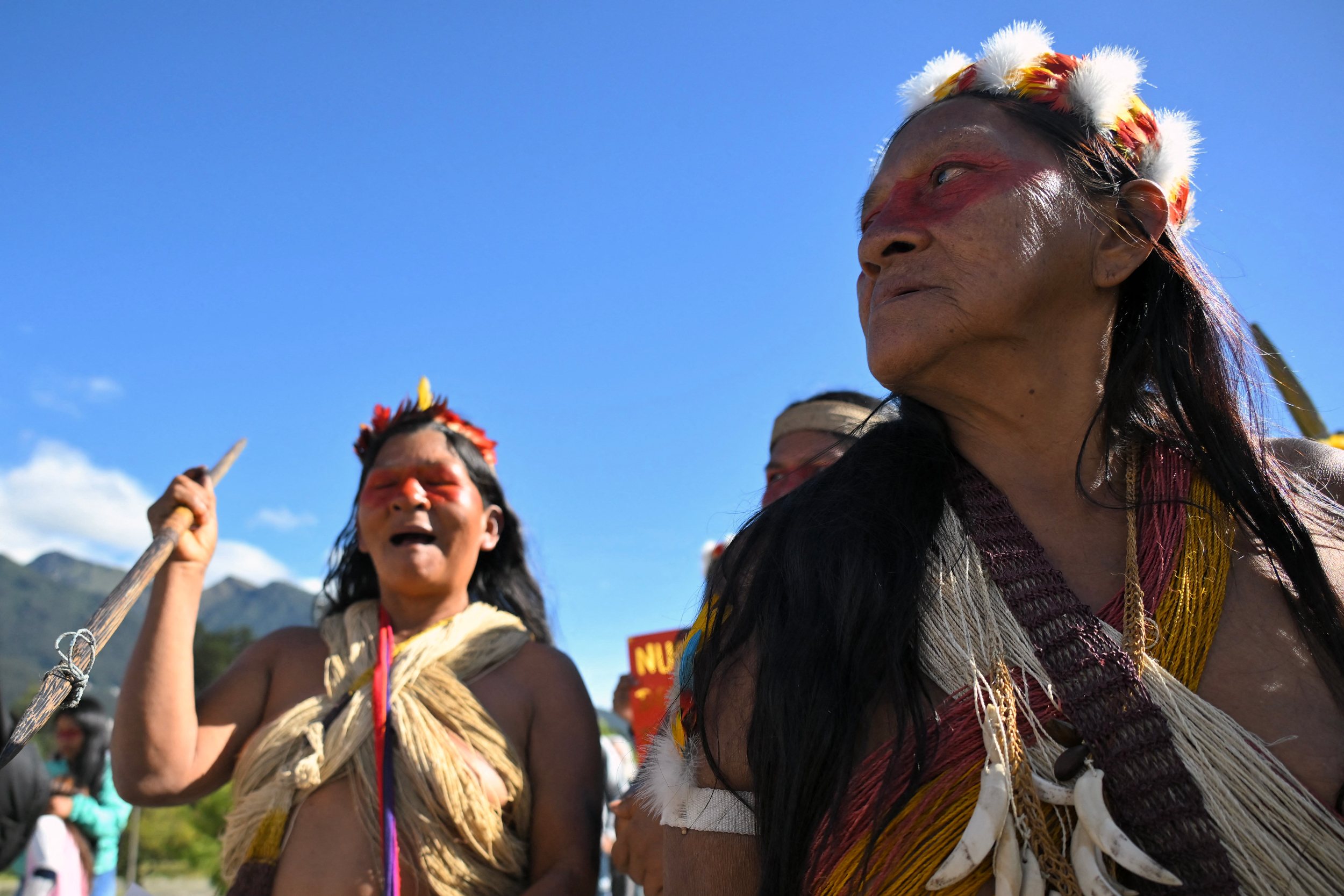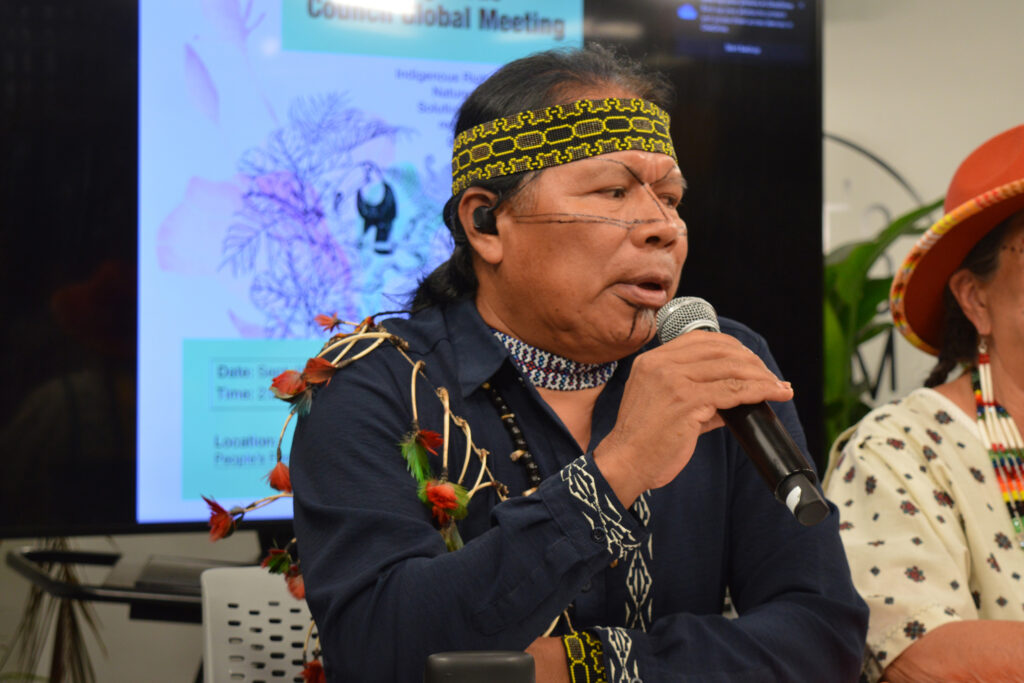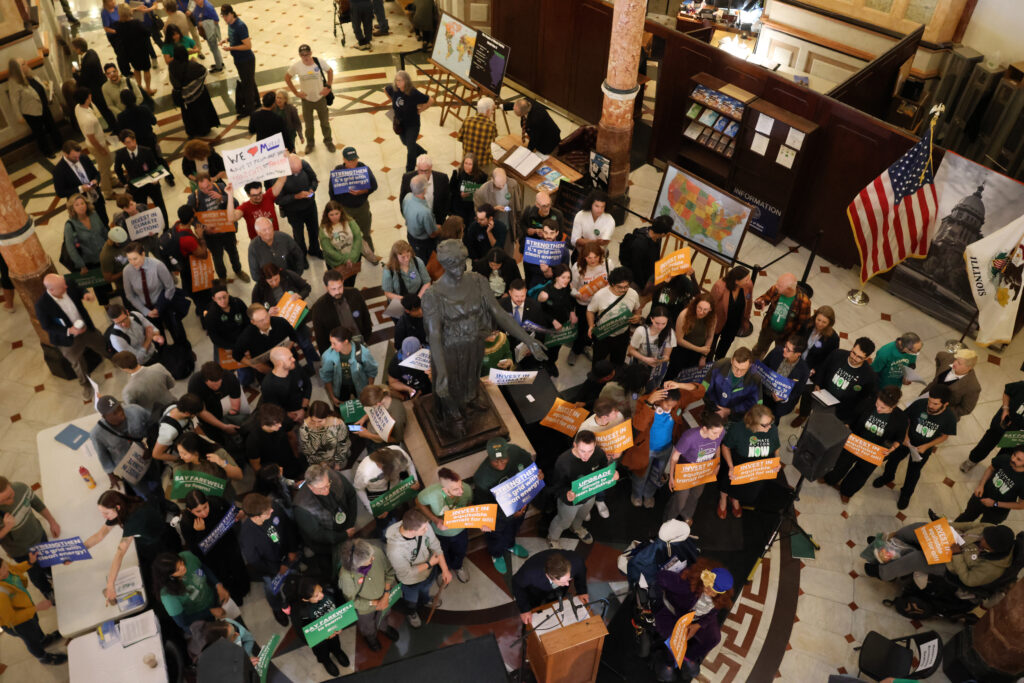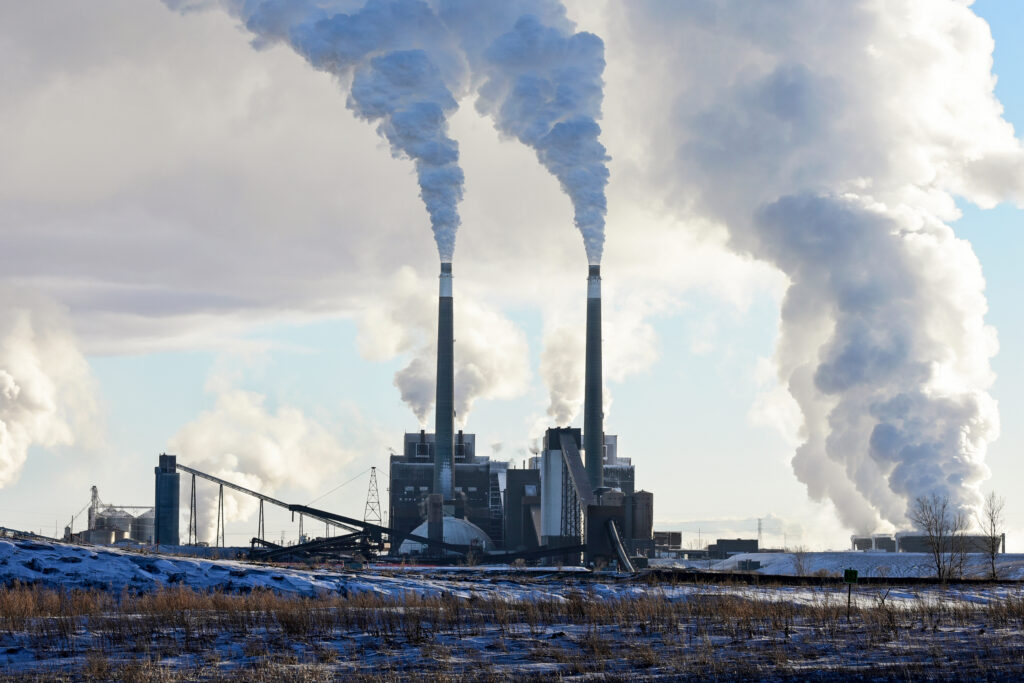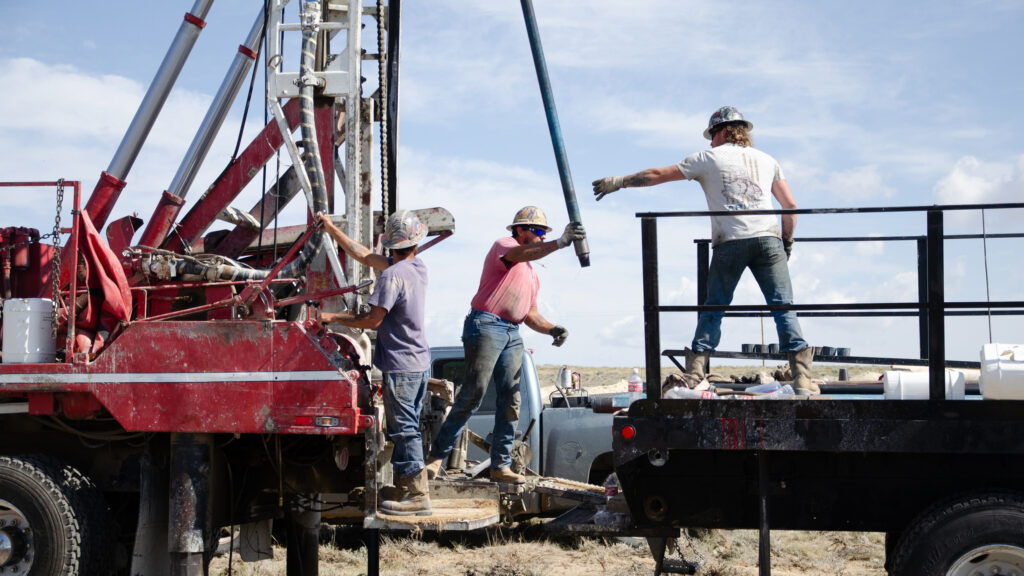SALT LAKE CITY—To complete a nonstop 4,000-mile flight, Wilson’s phalarope needs fuel.
The tiny inland shorebird famed for its reversed gender roles often finds that food in the Great Salt Lake. Upwards of 250,000 of the birds, a third of the species’ total population, will find their way to the country’s largest saline lake in the coming months to fill up on an almost endless supply of alkali flies, brine flies and brine shrimp. During that period, Wilson’s phalaropes will double their size and molt their feathers for a new coat, preparing them to travel south to Argentina for the winter.
But the pit stop needed to complete that journey is on the verge of collapse. For decades, the lake has received too little fresh water from the three rivers that feed it, largely due to agricultural operations diverting too much of their flow. That’s resulted in half of the lake’s surface area drying up, while the actual volume of water has dropped by around 70 percent. Less fresh water entering the lake means the salinity levels are rising, threatening the reproductivity of the invertebrates that feed Wilson’s phalarope and the millions of birds that come to the lake. Already, some sections of the lake are functionally dead after being cut off from the main body of water.

As part of an effort to save the lake and all that depends on it, a coalition of environmentalists and scientists filed a petition with the U.S. Fish and Wildlife Service last month to have Wilson’s phalarope listed as threatened under the Endangered Species Act. It’s a move that kicks off a years-long process that could force federal intervention to save the bird. Or it could force Utah and its neighboring states to devise their own conservation plan for the lake and Wilson’s phalarope to avoid federal involvement to protect the species.
“Our point is not to get a species on a list,” said Patrick Donnelly, the Great Basin director for the Center for Biological Diversity, which led the push for the petition. “Our point is to prevent extinction.”


The Great Salt Lake is vital to the health of the species’ population, which has already declined by around 70 percent since the 1980s. Wilson’s phalarope rely on the large saline lakes found in the Great Basin desert of the American West: Mono Lake, Lake Abert and the Great Salt Lake. Up to 90 percent of the bird’s adult population visit the three lakes every summer, while the rest travel to much smaller saline lakes. The Great Salt Lake is by far the largest and most important of the bird’s summertime habitats. Lake Abert has dried up twice in the past decade and, while Mono Lake is the healthiest of the three lakes, it is only about three to four percent of the size of the Great Salt Lake.
The solution to solving the problem, experts and advocates said, is simple: more water needs to enter the lake. Utah’s legislature has invested over $1 billion in programs aimed at water conservation and infrastructure to address the issue, with most funds going towards making agricultural operations more efficient. But more needs to be done, lake advocates say.
To restore healthy water levels of 4,198 feet above sea level to the Great Salt Lake in five years, about 3 million acre feet of freshwater need to enter it each year. That’s enough water for around five million homes in Utah and about double the amount that has entered the lake in recent years. Achieving the needed inflow will require billions of dollars and the collaboration of local communities, farmers and state and federal officials.
We’re hiring!
Please take a look at the new openings in our newsroom.
See jobs
“We can save the lake,” Donnelly said. “It just takes money.”
And the investment would not just help the birds.
A collapse of the lake would impact everything on the Wasatch Front, from ecosystems to economics. As the water disappears, exposing the lake bed, toxins that have accumulated there from nearby industries and naturally occurring elements like arsenic will likely dry into dust that can spread on the wind to deteriorate the region’s already poor air quality. Mining and industrial operations that rely on the lake’s water will not be able to continue operation. And Utah, a state famed for its mighty five national parks and some of the most scenic landscapes in the country, would risk losing its reputation as a place to see wild nature if it’s unable to save the lake its largest city is named for.
The petition to list Wilson’s phalarope as threatened opens the door for federal intervention, supporters of the filing said, and puts further pressure on Utah to act. “The future of Great Salt Lake is no longer confined to being a local concern, or a state concern, but a national priority with global implications,” said Terry Tempest Williams, the famed writer and naturalist, from the steps of the Utah State Capitol at a rally for the bird on March 28, when the petition was filed.


But the petition comes at a time when concern for the Great Salt Lake is dwindling in Utah, in part due to record snowfall in the mountains around the lake during the last two winters. In the weeks before its filing, Utah Gov. Spencer Cox, a Republican alfalfa farmer, told NPR that scientists’ studies predicting the lake could still go dry within the next five years were “laughable.”
“It’s a joke and everybody knows it’s a joke,” he said, adding that he was “far less worried” about the lake than he had been in years. Recent polling has also shown concern for the lake has dropped to be Utahns’ seventh top issue.
“There’s immense risk now but some of the urgency is gone,” said Ben Abbot, a professor of ecosystem ecology at Brigham Young University and executive director of Grow the Flow, a group dedicated to saving the Great Salt Lake who is a co-petitioner on the ESA filing.
“That’s the inverse of what we need to happen because we could do something now in wet years when you can move the needle,” he said. “Yet that’s when politicians and the public are least focused on the issue.”
If not for the wet winters the last two years, Abbot and other researchers said, the lake likely would have already collapsed. But continued overconsumption of water resources and climate change driving the aridification of the region mean time is running out to save the lake and the species like Wilson’s phalarope that rely on it.
The Rally
After the Great Salt Lake reached record lows in 2022, one of the largest and most diverse grassroots environmental movements in the Western U.S coalesced to prevent its collapse. This year’s legislative session opened to hundreds rallying for Utah’s elected leaders to do more to protect the lake. Each day during the legislative session from January to March, advocates for the lake have held vigils at the capitol, one in the morning and one in the evening, with puppets of the animals that rely on it in hand.
Creative works have been vital to the movement here in Salt Lake City, said Sarah May, a local artist and co-founder of Making Waves for the Great Salt Lake, an artist collaborative focused on bringing attention to the issues the lake is facing.
Many locals have some disdain for the lake, she said, because of its smell, which is sometimes similar to rotten eggs. But for May, it was a place to escape and be alone while growing up. She realized it was a special place, a sentiment she would later learn that others felt too, leading them to come together to advocate for the lake and, now, Wilson’s phalarope.
“For a lot of us, the phalarope is an old friend,” May said.




So to advocate for the protection of the lake and Wilson’s phalarope, they gathered once again at the steps of the Utah Capitol on a cold March morning, some donning costumes of Wilson’s phalarope, with dances and songs to advocate for the bird. The rally was the culmination of work that began two years ago when the Great Salt Lake reached record-low levels and environmentalists and researchers realized Wilson’s phalarope could face an existential threat if something wasn’t done.
“They are on the road to extinction without the Great Salt Lake,” said Ryan Carle, the science director for Oikonos Ecosystem Knowledge who led the writing of the petition and had studied phalaropes for the last five years.
Wilson’s phalarope is unique among birds. The species has reversed the typical sex roles found in most species: the females are bigger and brighter than their male counterparts, with streaks of peach in their feathers. Females also compete for mates, and leave the eggs they lay to be taken care of by the males. Unlike many species, they thrive on saline lakes.
They’re also tiny, weighing the same as just one and a half double A batteries, as Carle described them, until they come to places like the Great Salt Lake, where they double that.


The threat to Wilson’s phalarope “is our canary in the coal mine,” Terry Tempest Williams told the crowd, and provides an opportunity to recognize how connected the Salt Lake City metropolitan area’s population and ecosystems are.
“There is no separation between a healthy phalarope population and a healthy human population along the Wasatch Front,” she said. “Both of our lives are threatened by a shrinking Great Salt Lake.”
How The Endangered Species Act Could Bring Federal Action
The petition to have Wilson’s phalarope listed as threatened under the Endangered Species Act kicks off what will be a years-long battle to protect the bird.
The U.S. Fish and Wildlife Service has 90 days to review the petition, though it often takes much longer, and determine whether a listing is warranted. If it is, the federal agency will then conduct its own 12-month study on whether the species needs protection, a process that can take years to complete. If listed, the federal government can levy fines against individuals or entities that impact the species negatively and would enforce new regulations across the country to protect Wilson’s phalarope from further decline.


Donnelly, with the Center for Biological Diversity, said the process is designed to give states time to come up with their own USFWS-reviewed plans to protect the species and stay in control of the lake and its ecosystem. But regardless of whose jurisdiction a plan falls under, it will require protecting the Great Salt Lake.
Though daunting, researchers say it is possible to prevent further decline of the lake. Studies show that human consumption of water in the Great Salt Lake watershed is the primary cause of the lake’s diminishing levels, with around 75 percent of the region’s water going to agriculture. Climate change accounts for only around 9 percent of the decline. To researchers and environmentalists, that means that humans can still take control of the situation at a local level.
“It’s eminently solvable, but it’s going to be hard work,” said William Anderegg, director of the Wilkes Center for Climate Science and Policy at the University of Utah and a member of the Great Salt Lake Strike Team, a group of researchers and state officials tasked with providing research and policy recommendations for managing the lake. “It’s going to take commitment across many sectors and Utahns from all walks of life. But I’m optimistic and I do see a huge amount of momentum and concern about this and I think we absolutely can save the lake.”


There’s a variety of options, he said, that can get the lake back up to the targeted levels. Conservation efforts similar to those implemented in severe drought years across various sectors, such as fallowing farmland and state programs to remove turfs from residential yards could be enough over a 20-year period. That, combined with water banking, investments in more efficient farming and mining operations, and better forest management could bring significant gains to restoring the lake’s water levels.
For Donnelly, whose work primarily involves advocating for endangered endemic species that face threats from both climate change and human development, the situation is often “grim.” Saving Wilson’s phalarope and the Great Salt Lake, however, “is winnable,” he said.
Even so, it would be irresponsible to put saving the lake on just one bird, he said. Wilson’s phalarope and the Endangered Species Act are just one lever to force action to preserve the Great Salt Lake.
This story is funded by readers like you.
Our nonprofit newsroom provides award-winning climate coverage free of charge and advertising. We rely on donations from readers like you to keep going. Please donate now to support our work.
Donate Now
Combine that with other legal actions and public pressure, and a concerted fight to save the lake becomes unavoidable. The Center for Biological Diversity, along with other conservation and community groups, have sued the state under the public trust doctrine, arguing that Utah has breached the trust of its community members and their health and well-being by failing to take the necessary steps to preserve the lake. Further, as the lake declines, it could put Utah and Salt Lake City in violation of the Clean Air Act. And petitions to have other species dependent on the Great Salt Lake listed as threatened under the Endangered Species Act are not off the table, Donnelly said.
Utah should not have to solve this problem alone, petitioners said. Around a third of the water from rivers that feed into the Great Salt Lake is used for agriculture in Idaho and Wyoming, making it an interstate issue, and consequently, a federal problem—and not the only one regarding water in the Southwest.
Utah is already involved in a series of negotiations between seven states, 30 tribes and the federal government to reduce water usage along the Colorado River. There, the prevailing solution to the problem so far has been large payments from the federal government to major users in the Colorado River system to conserve water.
The issue here is not much different. “This problem transcends Utah,” Donnelly said, and Wilson’s phalarope may be the way to drive that point home.





